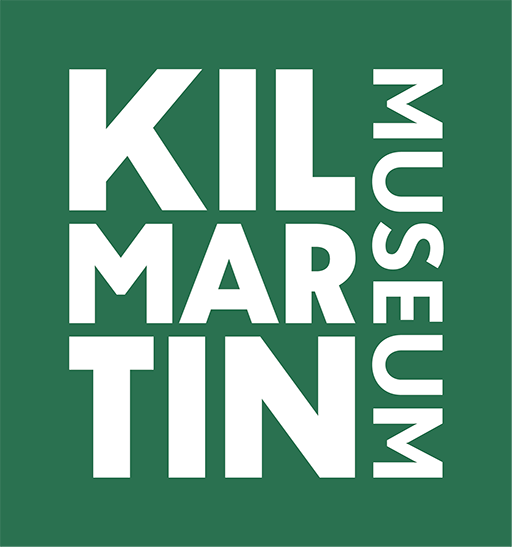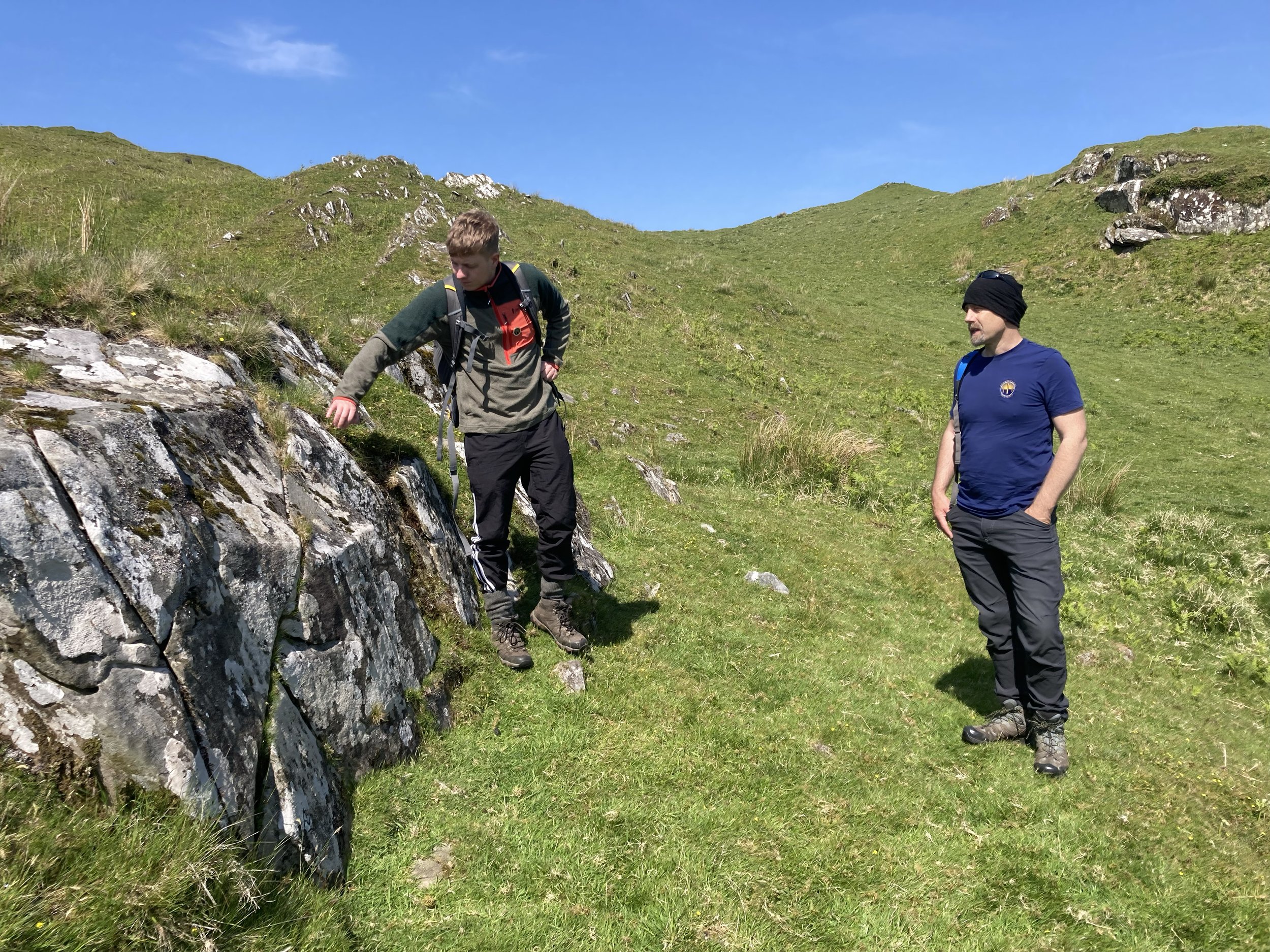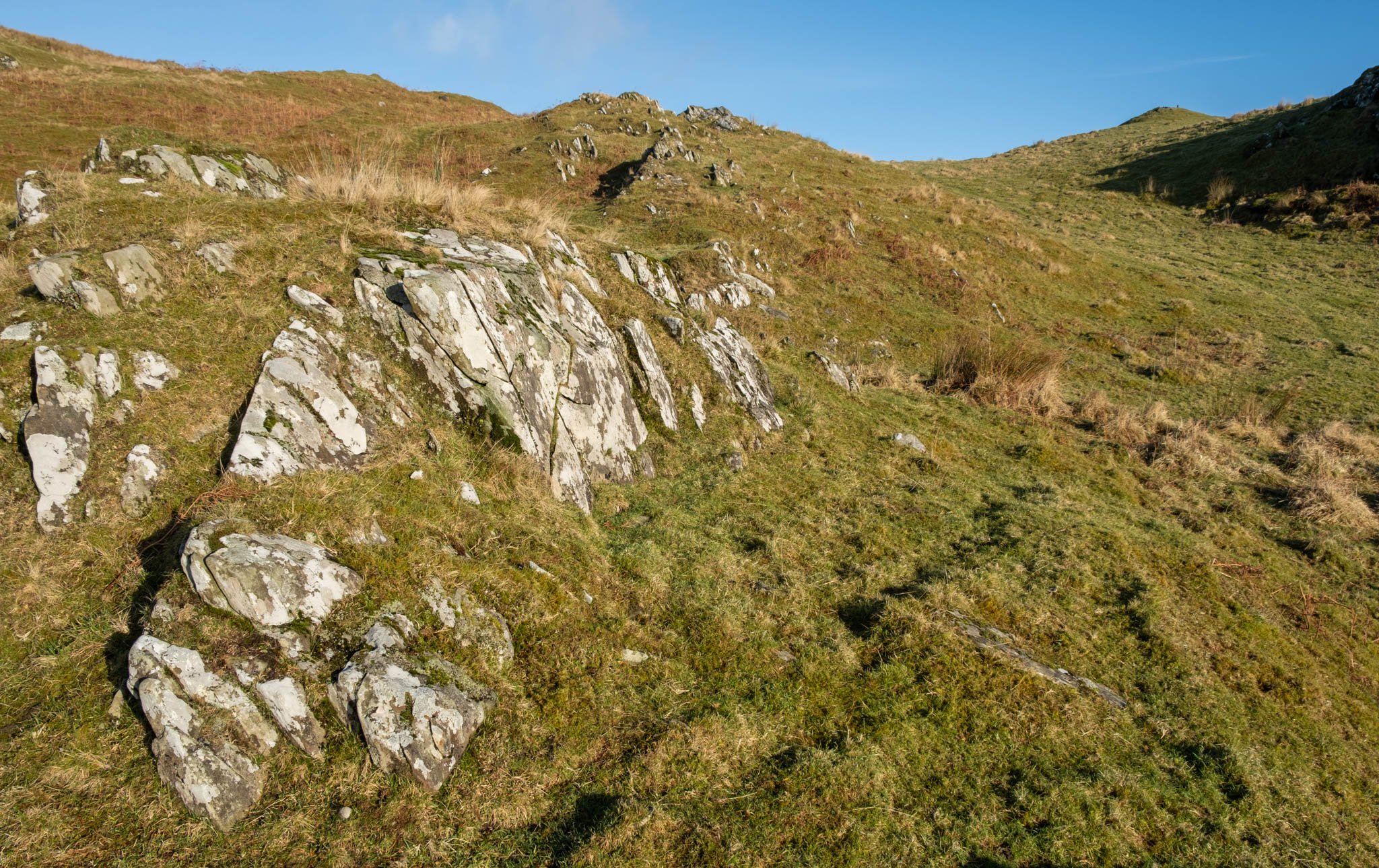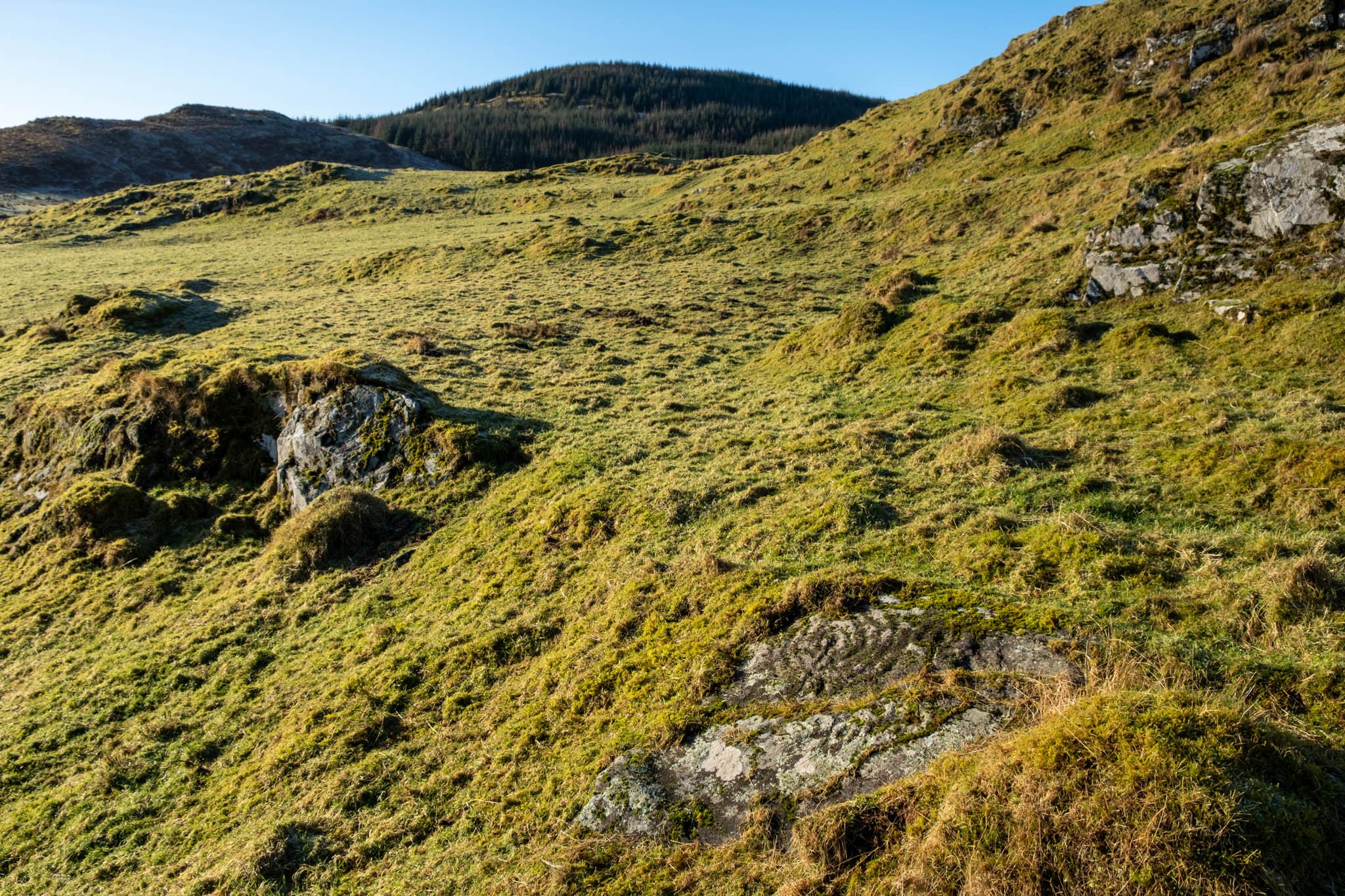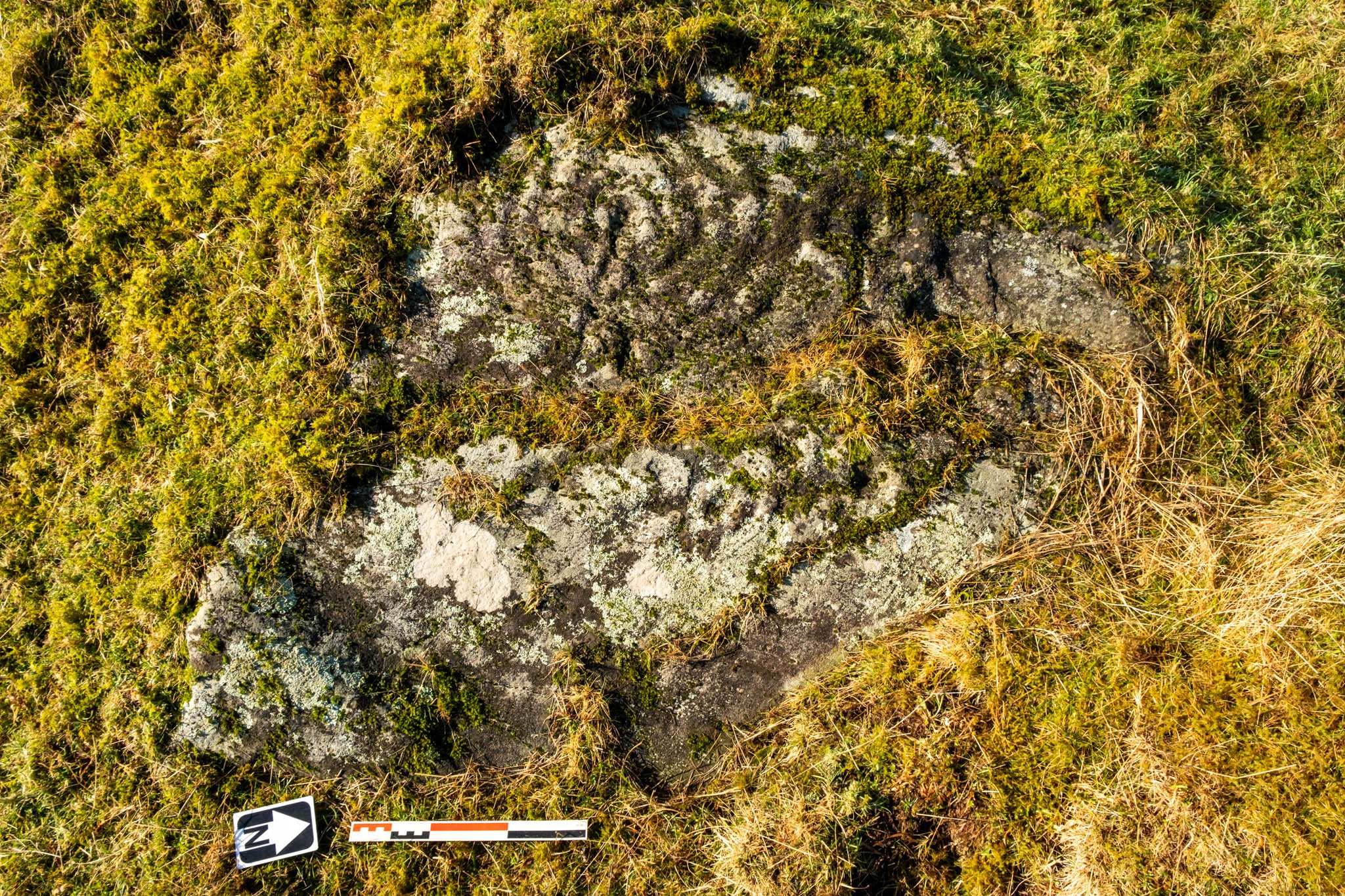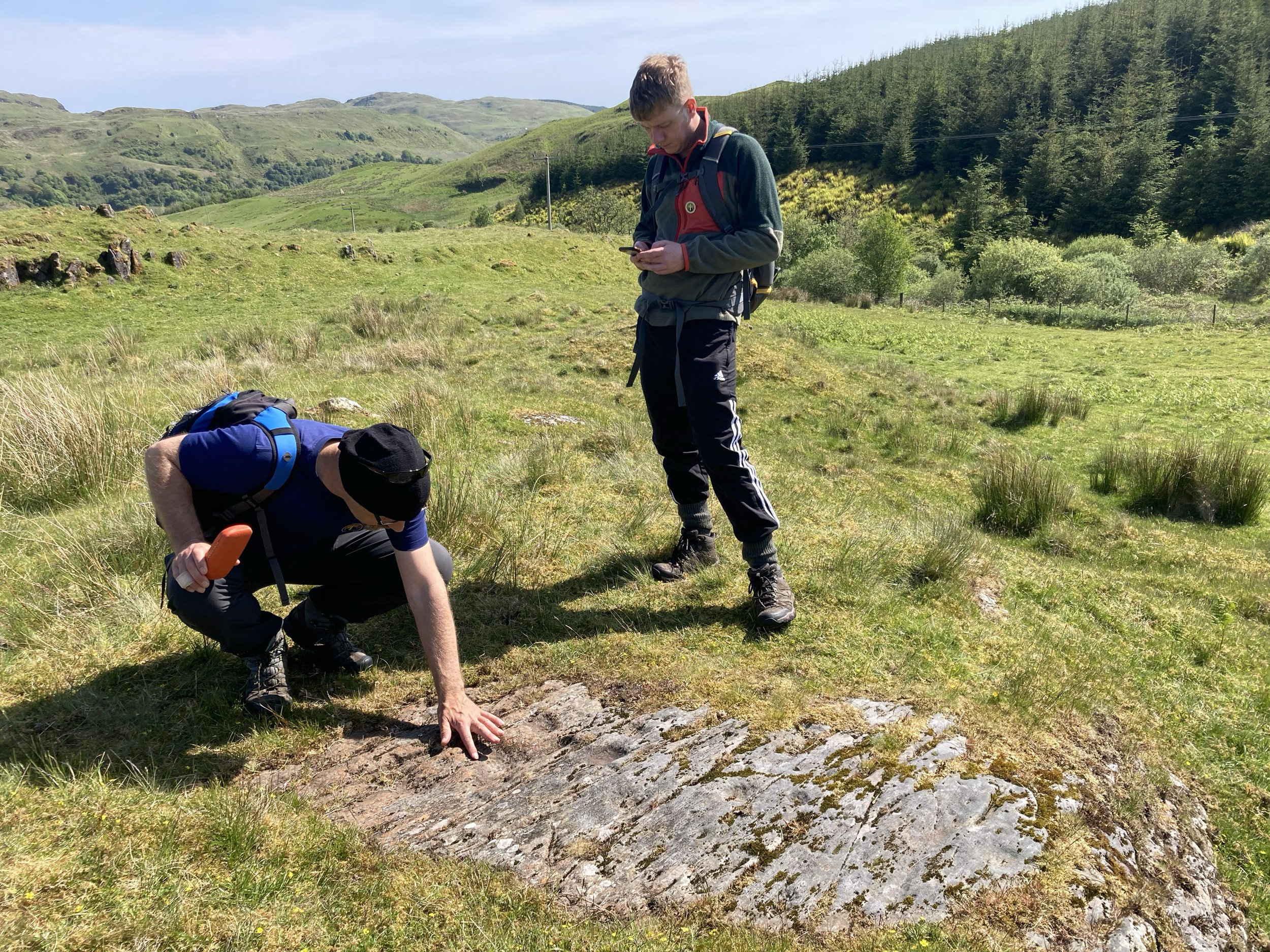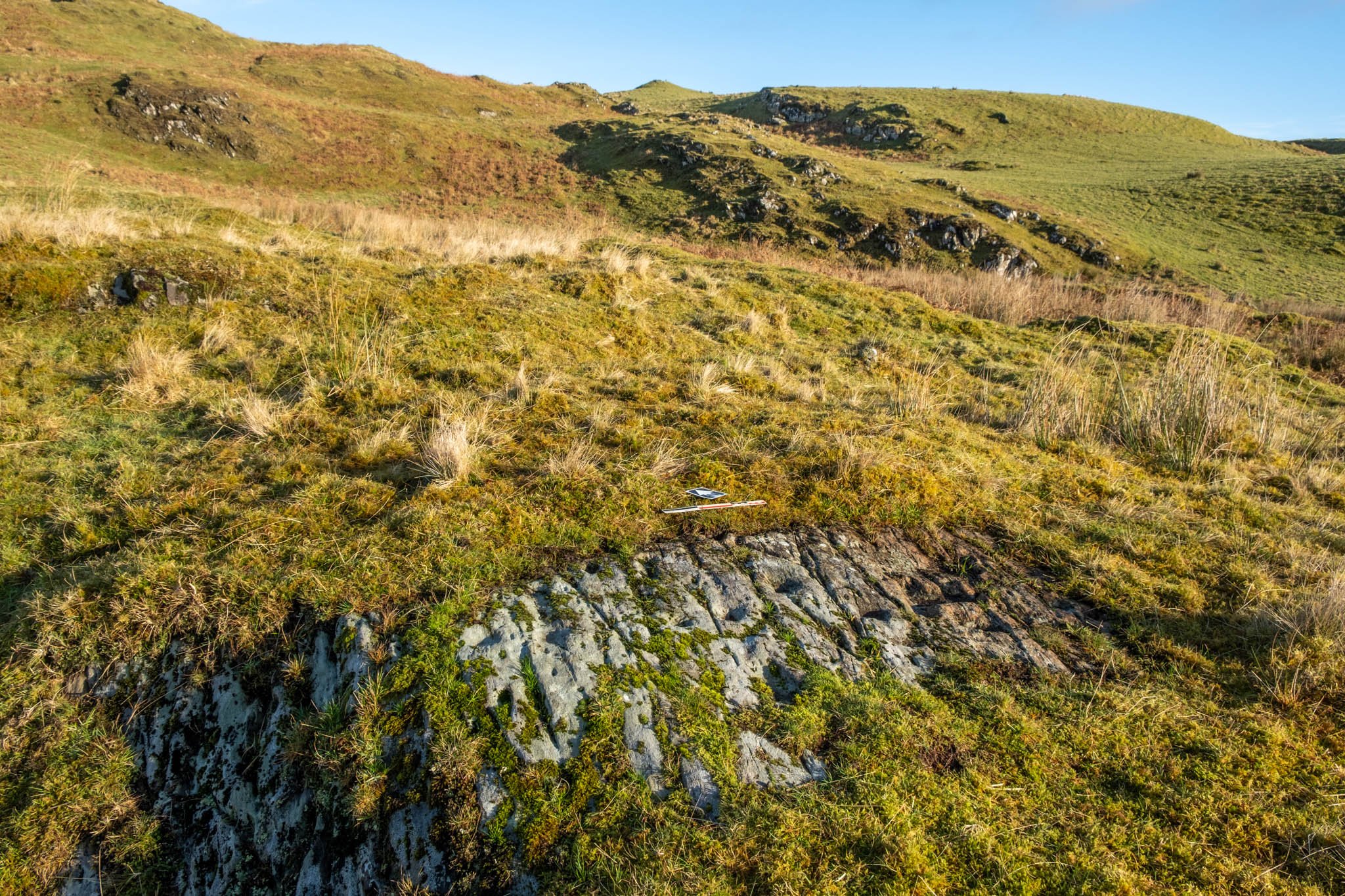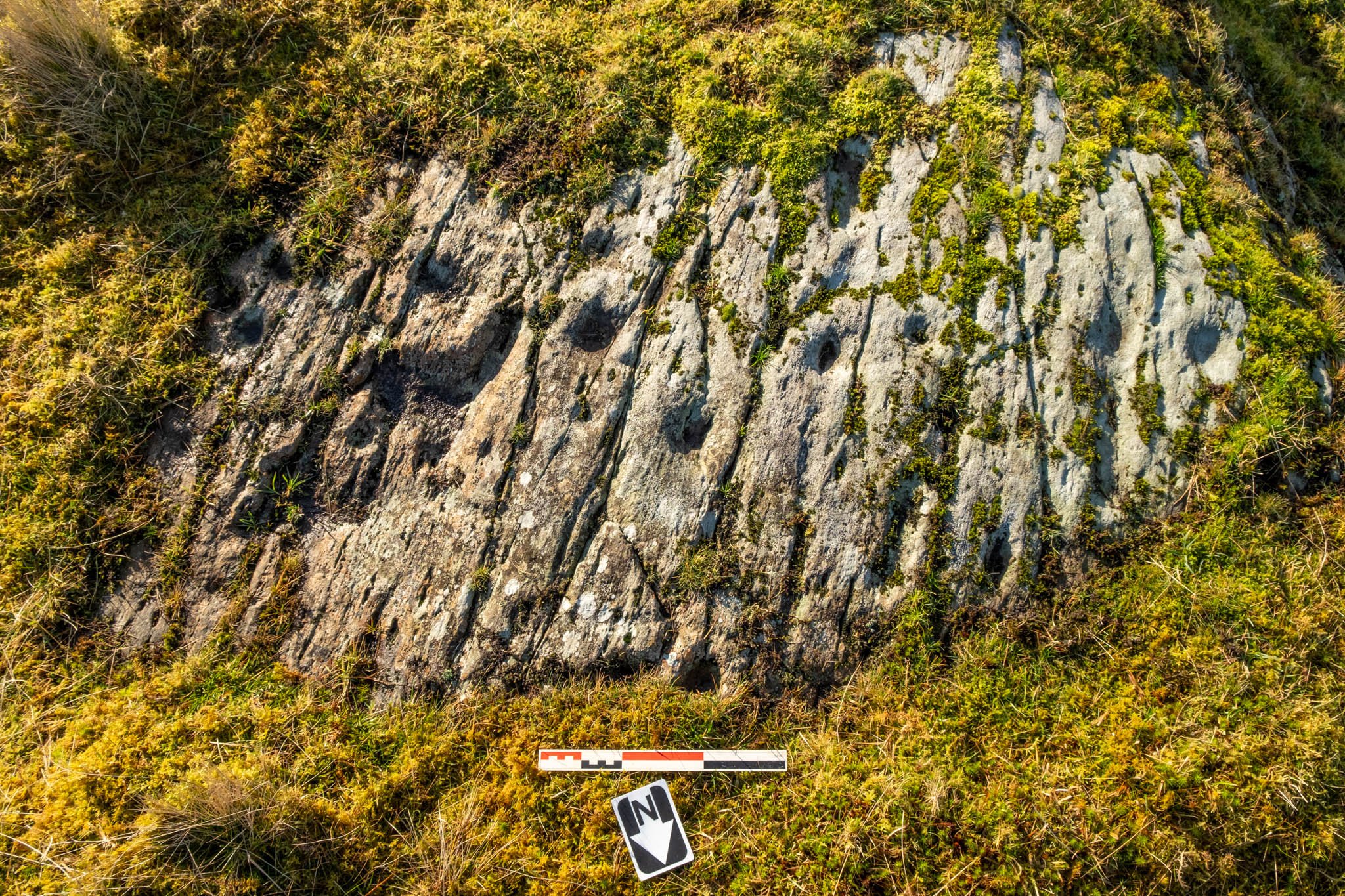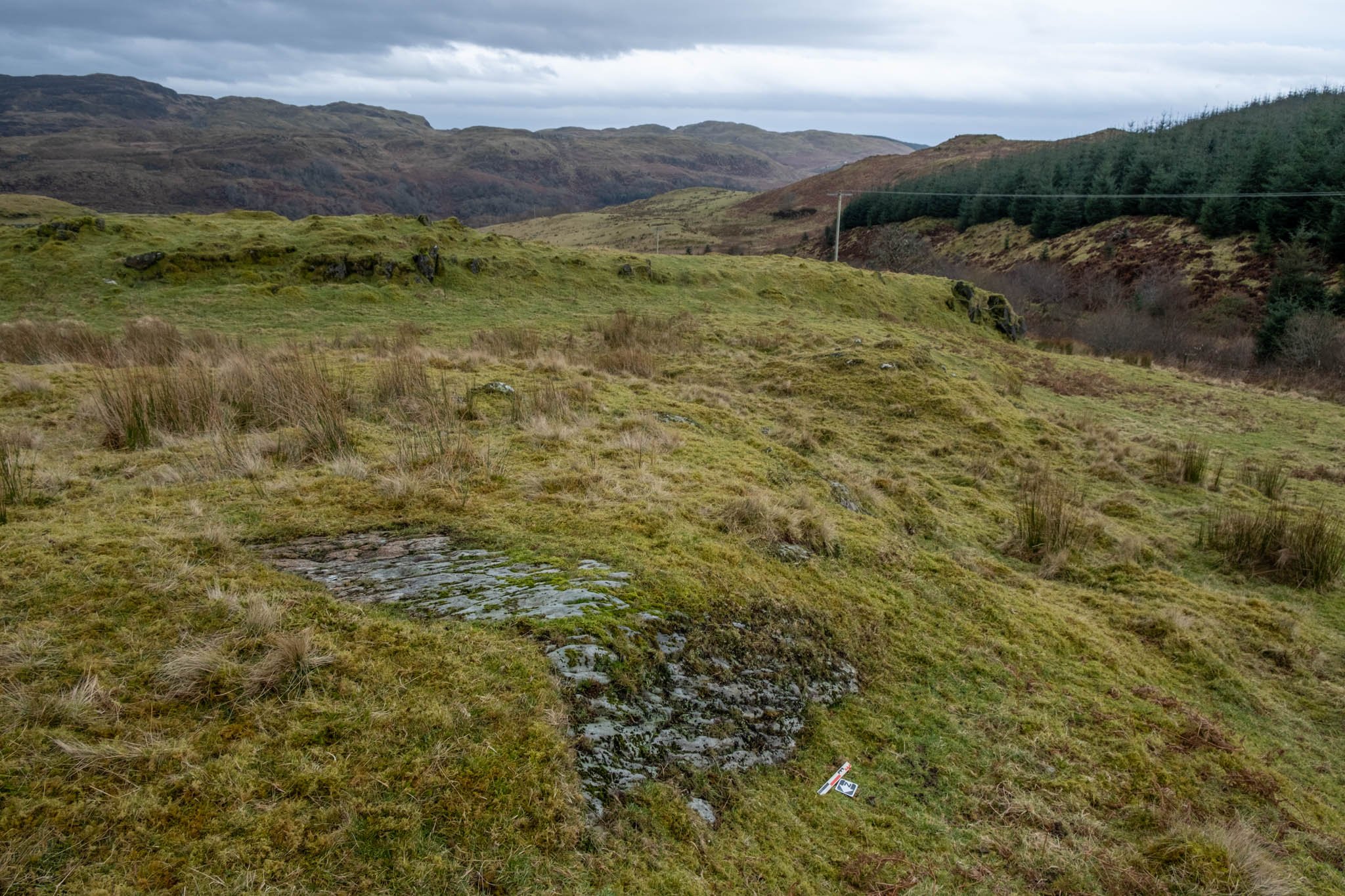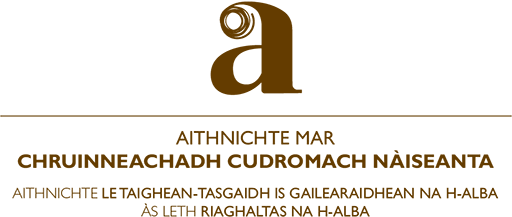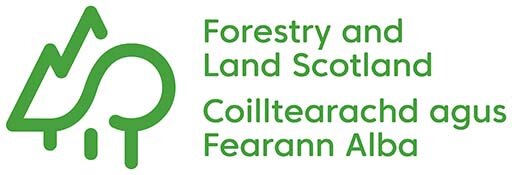Carnasserie Rock Art Excavation 2023
The Three Rock Art Panels
Three rock art panels will be excavated at Carnasserie. They have been selected partly because they appear to be largely undisturbed by later activities. This increases our chances of finding evidence relating to their original creation and use. Also significant are their varied characteristics, both in the carvings' appearance and the bedrock's form.
Rock Art Site 1
This sloping slab is low to the ground and can be difficult to find, yet it displays one of the most complex carved panels at Carnasserie, including a cup mark surrounded by several rings.
Above: Site 1 in the landscape. The carvings are visible on the sloping slab in the foreground (Photo: Aaron Watson)
Above: The carvings on Site 1 revealed by low sunlight, A shallow fissure crosses the panel, dividing it in two (Photo: Aaron Watson)
Above: A brief introduction to Rock Art Site 1 by Dr Aaron Watson (Kilmartin Museum)
In 2018, Scotland’s Rock Art Project cleaned vegetation from the visible rock surface to undertake recording and photogrammetry. Please click on the button below to view and interact with the online three-dimensional model they created:
Our trenches will test whether the visible rock is connected to the bedrock and reveal hidden carvings. The fissure that extends diagonally across the rock surface appears to frame and even differentiate the complexity of the carvings - does this pattern continue under the turf? In addition, was this fissure itself the focus for any deposits?
Rock Art Site 2
This bedrock slab contrasts with Site 1 in significant ways. While it is also level with the ground surface, the carved surface is level rather than sloping. No cups with rings have been recorded there, but it is marked by more than 20 cup marks, a few dumbells (conjoined cup marks) and various hollows, which may be natural. Fine fissures cross the surface of the rock.
Two trenches will be excavated at Site 2. The first will seek to reveal the outcrop's limits and record any further motifs. Does the character of the rock art visible in the exposed area continue, or are there hidden cups with rings? A second trench will be opened within an intriguing ‘hollow’ on the north side of the panel. Excavations elsewhere have shown that features like this can be a focus for deposits.
Above: Site 2 in the landscape. There are other rock art sites on the outcrops beyond, including Site 3 (Photo: Aaron Watson)
Above: Site 2 lit by low sunlight, highlighting the cup marks and fissures (Photo: Aaron Watson)
Scotland’s Rock Art Project cleaned vegetation from the visible rock surface to undertake recording and photogrammetry (they numbered this site as Carnasserie Farm 5). Please click on the button below to view and interact with the online three-dimensional model they created:
Rock Art Site 3
The visible rock art here is the simplest of all the three sites; nine cup marks have been recorded. The simplicity of the carvings contrasts with their being located upon an upstanding ‘rib’ of bedrock that extends across the hillside.
One trench will explore the top of the outcrop and reveal the full extent of the carvings, and their character. A second will explore the base of the rock to see if any evidence of activity survives there.
Above: The cup marks are situated on the top of the rocky outcrop (Photo: Aaron Watson)
Scotland’s Rock Art Project carefully cleaned back vegetation to undertake recording and photogrammetry. Please click on the button below to view and interact with the online three-dimensional model they created:
